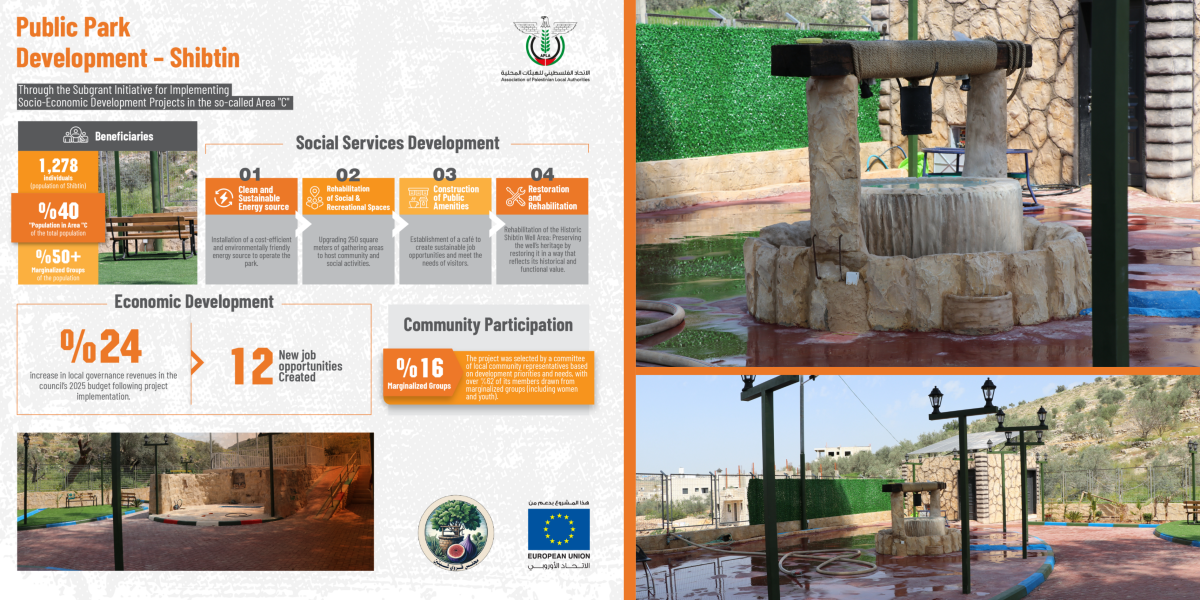Shibtin | Public Park Development
In Shibteen, west of Ramallah, the old stone well opens its mouth like a page of history that was never closed. Countless buckets were lowered along its edges; farmers returning from their fields filled them, women paused to draw water and exchange stories, and children ran around as if guarding the village’s memory with their small steps. Civilizations have passed through here, and generations have come and gone, yet the well has remained a witness that water in Palestine was never just a resource, but the spirit of life binding people to their land and preserving their existence.
Yet the village has not been spared the weight of the present. More than 374 dunums of its land were confiscated for the illegal settlements of “Nili” and “Na’aleh.” The separation wall now threatens to swallow an additional 695 dunums, while an Israeli quarry gnaws at the surrounding hills, leaving deep environmental scars. Like dozens of other Palestinian villages in Area C, Shibteen lives daily between deep historical roots and a suffocating reality of isolation and dispossession.
Around this historic well, the “Rehabilitation of Shibteen Public Park and Heritage Well” project took shape, not merely to preserve old stones but to create a living space for the community. On an area of 250 square meters, public grounds were rehabilitated to include shaded seating areas, safe playgrounds for children, and a small cafeteria that generates employment opportunities. The well itself was carefully restored, not as a silent relic, but as the heart of the design—bridging the community’s collective memory with its present-day life. The project directly serves 1,278 residents, 40% of whom live in Area C, with more than half being women and youth. Its impact is tangible: 24% increase in local council revenues in 2025, and 12 new jobs that support families and strengthen the local economy.
The park’s importance also goes beyond Shibteen itself. It serves eight neighboring communities: Shibteen, Shuqba, Qibya, Budrus, Khribtha Bani Harith, Deir Qaddis, Al-Midya, and Ni’lin—becoming a shared public space that connects villages and offers a collective breathing room in an environment deprived of proper planning.


The project was implemented within the framework of the Sustainable Development through Local Governance (SDLG) program funded by the Dutch Ministry of Foreign Affairs and implemented by VNG International, and through the Sub-grants Initiative implemented by APLA with funding from the European Union, with additional contribution from the Palestinian Ministry of Tourism. This partnership was not a substitute for local leadership but a reinforcement of it; Palestinian local authorities themselves led the process, proving that development in Area C is a political and social tool for protecting existence and reinforcing resilience.

 Key Indicators
Key Indicators
 Cultural Heritage
Cultural Heritage
 Public Parks
Public Parks
 Renewable Energy
Renewable Energy
